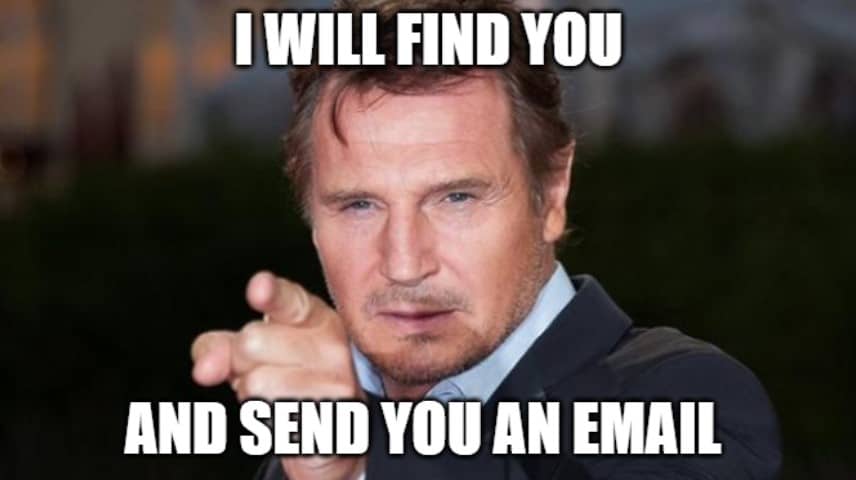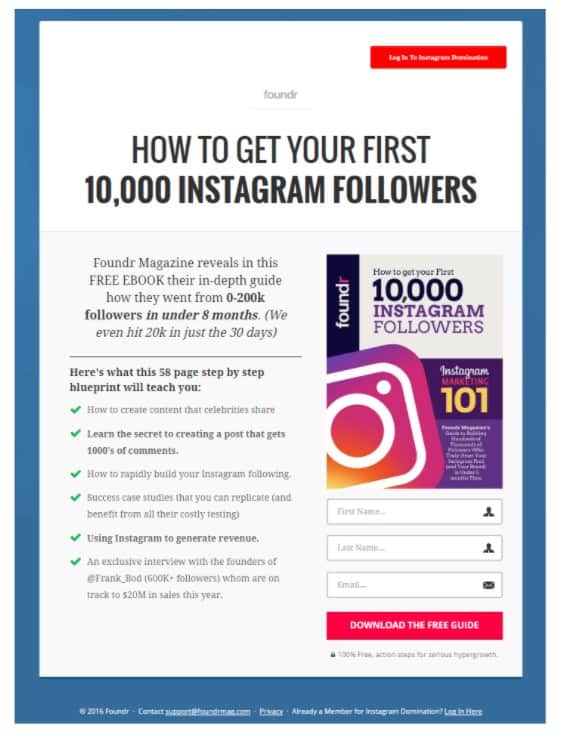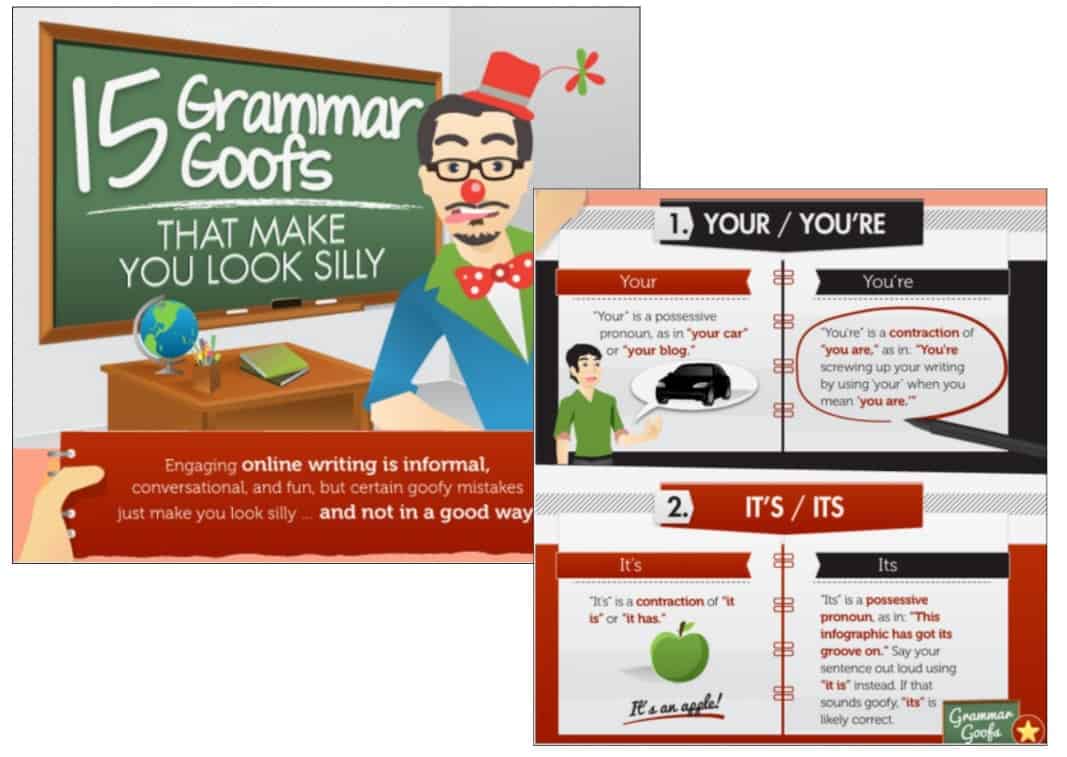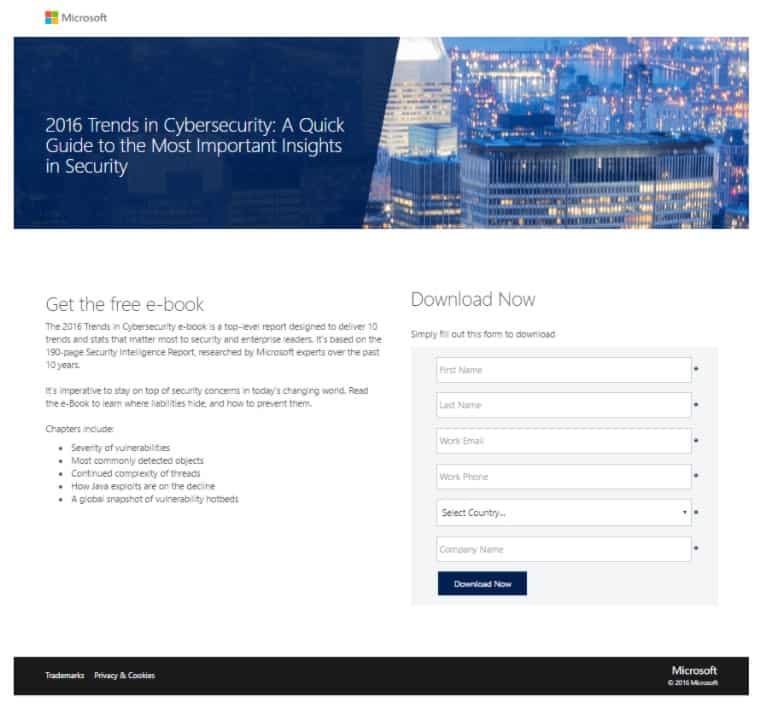How to Create Content that Generates Demand
Podcast: Play in new window | Download
Subscribe Today RSS
This week we're exploring lead magnets and how to create content that generates demand! We'll be sharing some great tips and insights to help you craft that ever-elusive "compelling content" people are always talking about.
Check out the video or podcast above. Subscribe to our weekly live stream on Facebook, or take it on the go with a podcast on your chosen platform. Keep up-to-date on news, trends, and tips in digital marketing and join in on the conversation.
What's New?
Apple's iOS 1.4 update has been big news lately, with the potential to change the digital marketing landscape as we know it. You can read more about it below, plus some interesting news for Pinterest and messaging channels!
What is an IDFA (and How Will Apple's iOS 14 Update Impact Advertisers)? - According to reports, Apple has taken the strategic stance that privacy is a user right and is currently taking steps to grant users more ability to opt-out of any targeting or tracking. This change is expected to occur across Apple's entire product portfolio.
Pinterest Details New Research, Features at Its Pinterest Presents Global Advertiser Summit - New video ad solution Pinterest Premiere gives brands access to exclusive placement on feed for a specific category, demographic, or interest.
How Messaging Channels are Surging and Becoming Critical to Marketing Success - More customers are using messaging channels to engage with brands and make purchases. This is evident in the number of first-time users who adopted a messaging channel in the last year.
What's Working?
So, how do you create content that generates demand? I can't even count how many times I've seen the phrase "create compelling content".
It's easy enough to say, but what does it even mean, and more importantly, of all the content you see in your day to day, how much of it would you consider to be actually compelling?
We'd love to see everyone creating quality content that is compelling to their target audience, so let's take a look at how we would go about doing that.
Buying Roles
Buying roles refer to the activities that one or more person(s) might perform in a buying decision. Six buying roles can be distinguished:
- Influencer - a person whose views influence other members of the buying center in making the final decision
- Decider - the person who ultimately determines any part of or the entire buying decision-whether to buy, what to buy, how to buy, or where to buy;
- Buyer - the person who handles the paperwork of the actual purchase
- User - the person who consumes or uses the product or service
- Gatekeeper - the person who controls information or access, or both, to decision-makers and influencers.
When you attempt to create content that generates demand, you need to understand what your target audience finds valuable.
You don’t want to offer generic content.
You want content targeted to:
- A specific industry.
- A job function.
- Company size.
- A specific location.
Buying Stages
70-90% of the buying process will happen before ever engaging with your company. Let that sink in.
Many businesses tend to put all of their energy and resources into the sale instead of creating content that generates demand.
It's a common mistake we all make because, as a business, you need that sale to survive. However, it's critical to remember that the consumer goes through many stages before purchasing.
If you attempt to bypass these stages, you'll most likely lose the sale, and that's not the outcome you want.
At each point during this process, the customer will go through a specific thought pattern. To help your customer follow through with the sale, you must understand what their needs are at each point.
The content someone finds relevant changes as they move through the buying stages.
For example:
- Educational pieces work well during the early awareness stages.
- Industry-specific pieces work well just as prospects start looking for a solution.
- Solution-oriented and company-focused materials are appropriate for prospects engaged in an active buying cycle.
- Following these stages can be extremely helpful if used as a framework to analyze your customer's thinking and then use what you learn in combination with other marketing efforts.
Content Mapping
Now, you want to map your buying processes and stages to your current content to see where you are missing key demand generation materials.
Content mapping is the process of delivering the right content, to the right people, at the right time.
You can get started with the content you already have.
With content mapping, the goal is to target content according to:
- The characteristics of the person who will be consuming it.
- How close that person is to making a purchase (Awareness, Consideration, Decision).
Remember that people consume content differently. Content mapping makes your site about your customer, not about your company.
Your customers will trust your company because you make it about them - their needs and their questions. You understand and solve their problems. In return, they will give you their support, trust, and their business.
Here are some steps to help map your content:
- List topics, themes, and industries relevant to your company.
- Conduct competitive analysis and understand how you stack against your competition in your industry topics.
- Define personas.
- Audit content and tag by topic, content type, sales cycle step, and persona.
- Optimize existing pages.
- Create a plan to fill content gaps.
- Implement your plan.
Conversion Paths
A conversion path is a process by which a website visitor becomes a known lead.
A conversion path comprises of a compelling content offer, call-to-action, landing page, thank you page, and follow-up email.
- Call to Action (CTA): This is the button that blog readers and website visitors click to access the resource you're offering through this lead magnet.
- Landing Page: This is where your lead magnet captures information provided by the visitor.
- Thank You, Page: The visitor is then led to a page where they can download your resource, officially adding them to your mailing list.
- Follow-Up Email: This email follows your follow-up message to the lead a short time after the exchange occurs.
To convert them into a lead, a visitor sees your compelling content offer that is of interest to them, clicks on the call-to-action button to access that content, and is then taken to a landing page.
On that landing page, the visitor can provide their information on a form in exchange for access to the offer itself. After submitting the form, the lead is taken to a thank you page where they receive the offer.
This not quite the end of the path, though. You want to continue to nurture that lead, so you'll want to send out a follow-up email after a few days to a week to continue building the relationship.
Types of Lead Magnets
Lead magnets are a fabulous way to connect with your target audience directly but offer some free content!
You want to create content that generates demand; however, offering just anything for free won't work. You have to entice your visitors with something they will find valuable.
Before offering a lead magnet, make sure it fulfills these criteria:
- Solves a real problem.
- Delivers quick wins.
- Gets super-specific.
- Easy to digest.
- Offers a high degree of perceived value.
- Provides Instant Gratification.
- Solves a problem.
Now let's take a look at some types of lead magnets you could create:
Educational lead magnets: Teach your visitors something they don't already know.
Useful lead magnets: Provide a tutorial, calculator, or another tool to solve a problem.
Community-Building lead magnets: Create a way for your audience to build a community based on the things they have in common.
Entertaining lead magnets: Inspire or entertain your audience.
Bottom of funnel lead magnets: Tip the visitor from lead to customer.
Lead Magnet Example #1: Checklist
Who doesn't like lists? Yes, I love lists. They are a perfect way to present information in a concise and orderly way.
Instructional blog posts are just waiting to be turned into checklists. Take your blog post and simplify it into a series of bullet points. Split the list into several numbered steps to make the outcome more achievable.
They're useful, so audiences are more likely to download them, and it's easy to promote them at the end of blog posts to get clicks and downloads.
Lead Magnet Example #2: Calculator
Interactive content is getting a lot of attention these days, and for a good reason. It's engaging, educational, and quite often entertaining!
Calculators are a great interactive lead magnet for lead generation and an excellent way to add value to your leads in exchange for their contact information.
They can help users to solve complicated equations and evaluate their standing in a particular scenario.
The more useful people find your calculator, the more likely they are to share it. They're also more likely to come back to it and to link to it, and all those actions help your business.
If you really want to bump up that conversion rate (and, of course, you do), try adding a "Benchmark" so users can see how their results compare to others.
People always want to know how they compare to others, so they're highly likely to complete the form to find out.
Online calculators provide a ton of benefits:
- They generate leads.
- Can qualify leads based on how people complete the form.
- Increase time on page and engagement rates.
- Reduce bounce rates.
- Give your users actionable, can't-get-anywhere-else information.
- Give you a way to customize content based on what people enter into the form.
- Can attract links and traffic from relevant sites.
Lead Magnet Example #3: Resource Guide
A Resource Guide is a collection of recommended items that your target audience can obtain to achieve better results.
What resources could you recommend to a potential customer that would help them to achieve better results?
Consider offering a Resource Guide as a lead magnet if you've already written a strategic blog post. It could be as simple as a list of books, apps, websites, or physical products you recommend.
Resource Guides are effective lead magnets because people like to buy something that will help them achieve good results.
It's easier to use a helpful tool to get results, and your audience will appreciate this.
These types of lead magnets are effective because:
- They are targeted towards a specific market and audience.
- People can acquire these tools instantly, so it gives instant gratification.
- It helps the audience believe that they can achieve better results.
- It has a high value because a trusted source recommends the tools.
Lead Magnet Example #4: Infographics
Infographics are visual representations of data and information that aim to present information precisely and clearly.
They are a convenient way of presenting information that users find handy, and convey a world of meaning with a glance and make complex content understandable and scannable.
They are also easy to track and analyze and can help boost your SEO.
We talk a lot about infographics because we love them, and it's a fun way to create content that generates demand! You can read more about them in these blogs:
How to Create Effective Content Marketing Machines
How to Create a Visual Content Marketing Strategy
Lead Magnet Example #5: E-books
When you read about the best ways to generate leads for your business, creating an e-book is always near the top of every list. E-Books get prospects interested in your business.
They offer convenience as people can read e-books on their tablets, laptops, or e-readers, depending on their preferences.
E-Books are a great way to get content into your visitors’ hands without having to print and ship physical copies of books, and lead generation using e-books is a proven way to build your email list.
An e-book allows you to attract people specifically searching for the type of information in your e-book. You become an authority on the subject, and your brand is more trusted as a result.
E-books also increase exposure because they can come in the easily sharable form of a PDF.
That's a Wrap
As always, thanks so much for reading, and we hope you found some content here to help you on your journey to create content that generates demand!
If you have any questions, comments, or stories to share, sound off in the comments below or hit us up on our social channels. Until next time.
May the force be with you.
https://hny.pt/pinterest-new-features
Google promises it won’t just keep tracking you after replacing cookies
https://hny.pt/google-privacy-replacing-third-party-cookies
What is an IDFA (and How Will Apple’s iOS 14 Update Impact Advertisers)?
https://hny.pt/apple-ios-idfa-guide
How Messaging Channels Are Surging and Becoming Critical to Marketing Success
https://hny.pt/messaging-channels-surging











